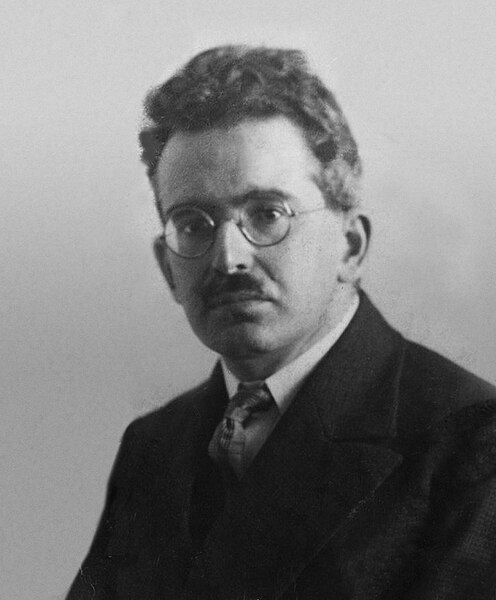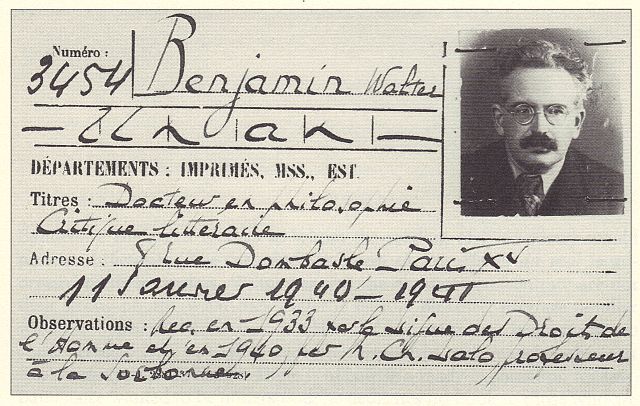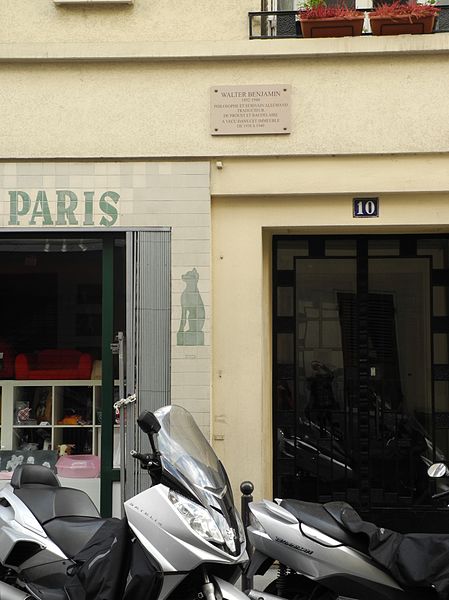Flâneur is a French term popularized in the nineteenth-century for a type of urban male "stroller", "lounger", "saunterer", or "loafer". The word has some nuanced additional meanings. Traditionally depicted as male, a flâneur is an ambivalent figure of urban affluence and modernity, representing the ability to wander detached from society with no other purpose than to be an acute observer of industrialized, contemporary life. Flânerie is the act of strolling, with all of its accompanying associations. A near-synonym of the noun is boulevardier.
Paul Gavarni, Le Flâneur, 1842
Charles Baudelaire
Gustave Caillebotte. Paris Street, Rainy Day, 1877. Art Institute of Chicago.
Gustave Caillebotte, Le Pont de l'Europe, oil on canvas, 1876. Musée du Petit Palais, Geneva.
Walter Bendix Schönflies Benjamin was a German Jewish philosopher, cultural critic, media theorist, and essayist. An eclectic thinker who combined elements of German idealism, Romanticism, Western Marxism, Jewish mysticism, and Neo-Kantianism, Benjamin made influential contributions to aesthetic theory, literary criticism, and historical materialism. He was associated with the Frankfurt School and also maintained formative friendships with thinkers such as playwright Bertolt Brecht and Kabbalah scholar Gershom Scholem. He was related to German political theorist and philosopher Hannah Arendt through her first marriage to Benjamin's cousin Günther Anders, though the friendship between Arendt and Benjamin outlasted her marriage to Anders. Both Arendt and Anders were students of Martin Heidegger, whom Benjamin considered a nemesis.
Benjamin in 1928
Walter Benjamin's membership card for the Bibliothèque nationale de France (1940)
Walter Benjamin's Paris apartment at 10 rue Dombasle (1938–1940)
Walter Benjamin's grave in Portbou. The epitaph in German, repeated in Catalan, quotes from Section 7 of "Theses on the Philosophy of History": "There is no document of culture which is not at the same time a document of barbarism"








